
Khujand: The Jewel of the Fergana Valley
Explore Khujand, one of Central Asia's oldest cities, rich with history, vibrant bazaars, and stunning landscapes along the Syr Darya River.
Khujand, the second-largest city in Tajikistan, is a hidden gem nestled in the Fergana Valley. Its rich history stretches back over 2,500 years, making it one of the oldest cities in Central Asia. As you stroll through its streets, you'll find a blend of ancient and modern influences, from Soviet-era buildings to vibrant bazaars that buzz with local life. The city is home to the stunning Sheikh Muslihiddin Mausoleum, an architectural marvel that dates back to the 12th century. Nearby, the Khujand Fortress offers a glimpse into the city's storied past, with its well-preserved walls and fascinating museum. For a taste of local culture, visit the bustling Panjshanbe Bazaar, where you can sample fresh produce, spices, and traditional Tajik crafts. Khujand's scenic beauty is complemented by the Syr Darya River, which flows through the heart of the city. The riverbanks are perfect for leisurely walks, with spectacular views of the surrounding mountains. Don't miss the chance to explore the Botanical Garden, a serene oasis filled with diverse plant species and peaceful walking trails. Whether you're a history buff, a nature lover, or simply looking to experience the warmth of Tajik hospitality, Khujand has something to offer every traveler.
Local tips in Khujand
- Visit the Panjshanbe Bazaar early in the morning for the freshest produce and a lively atmosphere.
- Wear comfortable walking shoes as many attractions are best explored on foot.
- Try local dishes like plov and manti at family-run restaurants for an authentic culinary experience.
- Carry some Tajik somoni in cash, as not all places accept credit cards.
- Learn a few basic phrases in Tajik or Russian; locals appreciate the effort and it can enhance your experience.
Khujand: The Jewel of the Fergana Valley
Khujand, the second-largest city in Tajikistan, is a hidden gem nestled in the Fergana Valley. Its rich history stretches back over 2,500 years, making it one of the oldest cities in Central Asia. As you stroll through its streets, you'll find a blend of ancient and modern influences, from Soviet-era buildings to vibrant bazaars that buzz with local life. The city is home to the stunning Sheikh Muslihiddin Mausoleum, an architectural marvel that dates back to the 12th century. Nearby, the Khujand Fortress offers a glimpse into the city's storied past, with its well-preserved walls and fascinating museum. For a taste of local culture, visit the bustling Panjshanbe Bazaar, where you can sample fresh produce, spices, and traditional Tajik crafts. Khujand's scenic beauty is complemented by the Syr Darya River, which flows through the heart of the city. The riverbanks are perfect for leisurely walks, with spectacular views of the surrounding mountains. Don't miss the chance to explore the Botanical Garden, a serene oasis filled with diverse plant species and peaceful walking trails. Whether you're a history buff, a nature lover, or simply looking to experience the warmth of Tajik hospitality, Khujand has something to offer every traveler.
When is the best time to go to Khujand?
Iconic landmarks you can’t miss
Kamoli Khujandi Park
Explore Kamoli Khujandi Park, a tranquil escape in Khujand, Tajikistan, filled with lush gardens, cultural events, and serene pathways perfect for relaxation.

Somoni Park
Discover the beauty of nature and culture at Somoni Park, Khujand's serene escape filled with history, monuments, and vibrant local life.
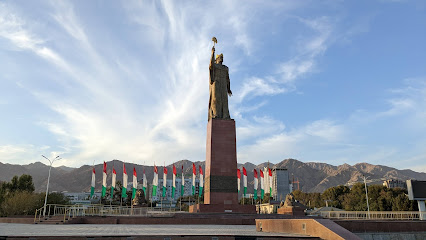
Sughd Region Museum
Explore the Sughd Region Museum in Khujand, Tajikistan, a gateway to the rich history and culture of Central Asia, showcasing artifacts from ancient to modern times.

Parliament Palace Hotel
Discover luxury and comfort at the Parliament Palace Hotel in Khujand, Tajikistan, your perfect retreat for exploring local culture and attractions.

Stella Khujand
Experience the beauty and tranquility of Stella Khujand, a must-visit tourist attraction in Khujand, Tajikistan, perfect for relaxation and exploration.

Rudaki Monument
Explore the Rudaki Monument in Khujand, a symbol of Tajikistan's rich literary history and a serene spot for reflection amidst beautiful gardens.

Kamal Khujandi Statue
Explore the Kamal Khujandi Statue in Khujand, where Tajikistan's rich literary heritage comes alive amidst stunning landscapes and vibrant culture.

Bouling Galaktika
Experience the joy of bowling in Khujand at Bouling Galaktika, a lively venue perfect for fun, entertainment, and local culture.

Arbob Palace
Explore the enchanting Arbob Palace in Khujand, Tajikistan, a stunning government building and tourist attraction steeped in history and beauty.

Kheson
Discover the warmth of hospitality at Kheson, your ideal indoor lodging in Khujand, Tajikistan, with easy access to local attractions.

Sugdiyon
Experience authentic Tajik cuisine in a warm and inviting atmosphere at Sugdiyon, Khujand's beloved dining destination.
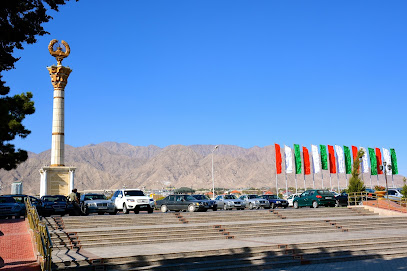
Statue of Lenin
Explore the Statue of Lenin in Khujand, a significant historical landmark reflecting Tajikistan's Soviet heritage and vibrant culture.

Khujand Historical Leaders
Explore Khujand Historical Leaders, a testament to the rich history of Tajikistan, celebrating the influential figures who shaped the region's past.
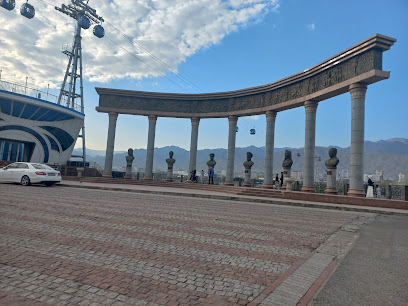
Ostanovka Panshanbe Bazar
Experience the vibrant atmosphere of Ostanovka Panshanbe Bazar, the heart of Khujand's transportation network and a cultural hub for travelers.

Kapitoliyskaya Volchitsa
Discover the historical significance of Kapitoliyskaya Volchitsa, a captivating landmark in Khujand, Tajikistan, rich in culture and heritage.
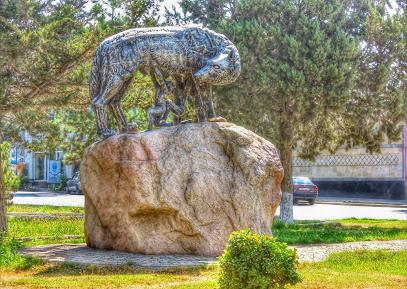
Unmissable attractions to see
Sughd Region Museum
Explore the Sughd Region Museum in Khujand for an insightful journey through Tajikistan's rich history and diverse cultural heritage.

Mausoleum of Sheik Muslihiddin
Explore the Mausoleum of Sheik Muslihiddin in Khujand, a historical gem showcasing exquisite architecture and deep cultural significance.

Kamal Khujandi Statue
Explore the historic Kamal Khujandi Statue in Khujand, Tajikistan, a tribute to Persian poetry and a beautiful park for relaxation.

Arbob Palace
Explore the majestic Arbob Palace in Khujand, Tajikistan, a stunning blend of history, architecture, and beautiful gardens that captivates every visitor.

Park 30 Letiya 16 Sessii SYezda
Explore the natural beauty and local culture at Park 30 Letiya 16 Sessii SYezda in Khujand, a peaceful retreat for tourists in Tajikistan.

Hucend'in Tarihi Liderleri
Discover the legacy of Tajikistan's historical leaders at Khujand's captivating landmark, where culture and history intertwine seamlessly.

Alley of Heroes
Explore the Alley of Heroes in Gafurov, Tajikistan—a serene tribute to the nation's courage and rich history, perfect for reflection and remembrance.

Essential places to dine
Beliy Dom (White House)
Experience authentic Tajik hospitality at Beliy Dom (White House) in Khujand – where local flavors meet international cuisine.
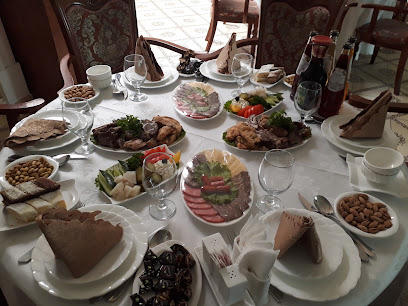
Cafe Ravshan
Discover authentic Tajik cuisine at Cafe Ravshan in Khujand—where tradition meets flavor in every bite.

Turkish cafe - Saray
Discover authentic Turkish cuisine at Saray Cafe in Khujand - where every bite tells a story.

Restoran Bakhtiyor
Experience authentic Tajik cuisine at Restoran Bakhtiyor in Khujand - where tradition meets flavor.

Shashliki Takhtacha
Discover authentic Tajik cuisine at Shashliki Takhtacha in Khujand—where tradition meets flavor in every dish.

Ansitu
Discover authentic Tajik cuisine at Ansitu in Khujand – where tradition meets taste in every delightful bite.

Farzona
Discover Farzona in Khujand - A Family-Friendly Restaurant Serving Authentic Tajik Cuisine with Warm Hospitality.

Paprika Khujand
Experience authentic Tajik cuisine at Paprika Khujand - where every dish tells a story of tradition and flavor.

Shahdi Khujand
Discover an exquisite array of desserts at Shahdi Khujand in Tajikistan - where tradition meets sweetness.

Mokhii Amon
Experience the essence of Tajikistan at Mokhii Amon - where traditional flavors meet warm hospitality in Khujand.

Dousti
Discover authentic Tajik cuisine at Dousti Bistro in Khujand – where flavor meets tradition in a cozy setting.
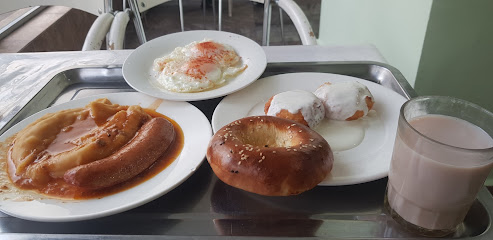
Ресторан «Форель»
Experience authentic Tajik cuisine at Ресторан «Форель», a family-friendly gem in Khujand offering delicious dishes and warm hospitality.

Kafe Nematjon
Experience authentic Tajik cuisine at Kafe Nematjon in Khujand—where tradition meets flavor in a warm atmosphere.

Bogi Firdavs
Discover authentic Tajik flavors at Bogi Firdavs in Khujand – a delightful restaurant experience awaits you.

Kafe Azizi Dil
Experience authentic Tajik cuisine at Kafe Azizi Dil – where flavor meets hospitality in Khujand.

Markets, malls and hidden boutiques
Afghan bazaar
Explore the Afghan Bazaar in Khujand for a colorful shopping experience filled with fresh produce, local crafts, and delicious street food.

Khuchand Kuchay Guliston
Discover Khuchand Kuchay Guliston, your go-to sports nutrition store in Khujand for health-conscious travelers seeking quality supplements and expert advice.
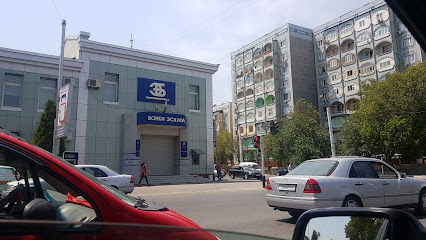
Li-Ning TJ
Explore Li-Ning TJ in Khujand for stylish and durable sportswear that enhances your athletic performance and fashion sense.

Magazin Diram
Explore local flavors and international products at Magazin Diram in Khujand, Tajikistan's vibrant grocery destination.

Avon Tajikistan
Discover Avon Tajikistan in Khujand - a premier cosmetics store offering quality beauty products and an authentic shopping experience.

Magazin Sportivnogo Pitaniya Khujand
Explore Khujand's premier sports nutrition store, offering a wide range of supplements and health products for fitness enthusiasts.

Magazin Murodchon
Experience local culture and authentic Tajik shopping at Magazin Murodchon, the vibrant supermarket in Khujand offering unique products.

Magazin Odezhdy Fazl
Explore the vibrant world of Tajik fashion at Magazin Odezhdy Fazl, where tradition meets modern style in Khujand.

Магазин ДӮСТОН
Explore the vibrant ДӮСТОН Store in Khujand for authentic Tajik crafts, delicious local snacks, and a taste of the region's rich cultural heritage.
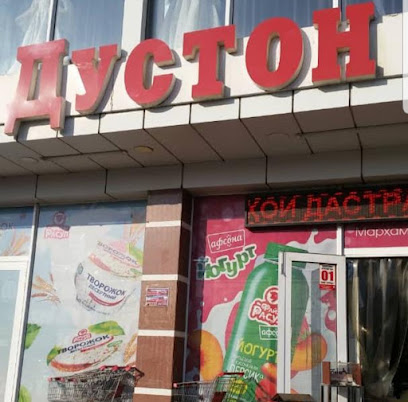
Дукони Зарифҷон
Experience the authentic flavors of Tajikistan at Дукон Зарифҷон, a vibrant grocery store in Khujand offering fresh produce and local delicacies.

Magazin Azim Odezhdy I Obuvi Iz Turtsii
Discover stylish apparel and footwear at Magazin Azim Odezhdy I Obuvi Iz Turtsii in Khujand, where vibrant fashion meets warm local hospitality.

Спорт Сити - Sport City
Explore Sport City in Khujand, Tajikistan for top-notch sportswear and gear to enhance your athletic adventures.

Guli Jahon
Discover Guli Jahon in Khujand: where banking meets stylish footwear shopping in a welcoming atmosphere.

Unchi
Discover Unchi in Khujand, a cultural shopping paradise offering unique Tajik crafts and souvenirs that reflect the region's rich heritage.

Arsh
Explore Arsh in Khujand, Tajikistan - a unique store offering local crafts, souvenirs, and a glimpse into the rich cultural heritage of the region.

Essential bars & hidden hideouts
Beliy Dom (White House)
Experience the vibrant flavors of Tajikistan at Beliy Dom, a culinary haven in Khujand offering a diverse menu and warm hospitality.

Turkish cafe - Saray
Experience authentic Turkish cuisine at Saray Turkish Cafe in Khujand, where flavors and hospitality meet in a cozy atmosphere.

Насими Баҳор
Discover the authentic tastes of Tajikistan at Насими Баҳор, where traditional cuisine meets warm hospitality in the heart of Khujand.

Adibon
Discover the charm of Adibon Cafe in Khujand, where local flavors meet a cozy atmosphere for an unforgettable dining experience.
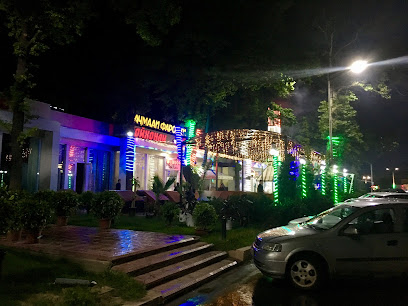
Royal Resto-Bar
Discover the vibrant atmosphere and exquisite cuisine at the Royal Resto-Bar in Khujand, Tajikistan, where every meal is a celebration.

Turetskoye Kafe Mevlana
Discover the essence of Turkish cuisine at Turetskoye Kafe Mevlana in Khujand, where every dish is a celebration of flavor and culture.
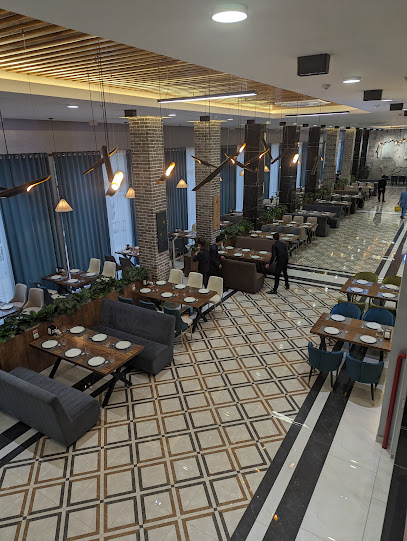
Khvakanta
Experience Khujand's vibrant nightlife at Khvakanta, a lively nightclub offering great music, drinks, and an unforgettable atmosphere.

City beach
Experience the lively ambiance and scenic beauty of City Beach in Khujand, a perfect getaway for relaxation and fun under the sun.

Produktovyy Magazin
Discover the flavors of Tajikistan at Produktovyy Magazin, a charming bistro and food store in Khujand, where every dish is a celebration of local cuisine.

Mukhammad
Experience the vibrant tastes of Tajikistan at Mukhammad, a premier grill restaurant in Khujand offering mouth-watering dishes in a cozy atmosphere.

Барсбург
Discover the lively nightlife at Барсбург in Khujand, where local culture meets a vibrant atmosphere and refreshing drinks.

Sportbar Istiklol
Explore Khujand's nightlife at Sportbar Istiklol, where local flavors meet a lively atmosphere for an unforgettable dining experience.

Saho
Discover Saho, the vibrant brewpub in Khujand, where craft beer meets delicious cuisine in a cozy atmosphere.

Oshkhonai Vakhdat
Discover the warmth of Chkalovsk at Oshkhonai Vakhdat, a charming bar and café perfect for sipping drinks and savoring local flavors.

Minibar
Experience the vibrant atmosphere of Minibar in Khujand, where refreshing drinks and friendly vibes create unforgettable moments.

Local Phrases
-
- HelloСалом
[Salom] - GoodbyeХайр
[Khayr] - YesҲа
[Ha] - NoНе
[Ne] - Please/You're welcomeЛутфан
[Lutfan] - Thank youРахмат
[Rahmat] - Excuse me/SorryМазарат
[Mazarat] - How are you?Шумо четор ҳастед?
[Shumo chetor hasted?] - Fine. And you?Хубам. А шумо?
[Khobam. A shumo?] - Do you speak English?Шумо англисӣ гап мезанед?
[Shumo anglisī gap mezaned?] - I don't understandМан фаҳм намекунам
[Man fahm namekunam]
- HelloСалом
-
- I'd like to see the menu, pleaseЛутфан менюро бегаред
[Lutfan menyuro begared] - I don't eat meatМан гӯшт намехарам
[Man gūsht namekharam] - Cheers!Сайён!
[Sayon!] - I would like to pay, pleaseЛутфан ман хоҳам пул бедаҳам
[Lutfan man khoham pul bedaham]
- I'd like to see the menu, pleaseЛутфан менюро бегаред
-
- Help!Кумак!
[Kumak!] - Go away!Равона шавед!
[Ravona shaved!] - Call the Police!Пулисро хона шавед!
[Pulisro khona shaved!] - Call a doctor!Духтурро хона шавед!
[Dukhturro khona shaved!] - I'm lostМан ҷой гум шудам
[Man joy gum shudam] - I'm illМан беморам
[Man bemoram]
- Help!Кумак!
-
- I'd like to buy...Ман мехоҳам харидан...
[Man mekhoham kharidan...] - I'm just lookingМан танҳо гӯроҳ мекунам
[Man tanho gūroh mekunam] - How much is it?Қиймат чанд аст?
[Qīmat chand ast?] - That's too expensiveИн хеле гаро
[In hele garo] - Can you lower the price?Метавонед нархро кам кунед?
[Metavoned narhro kam kuned?]
- I'd like to buy...Ман мехоҳам харидан...
-
- What time is it?Ҳозир чанд вақт аст?
[Hozir chand vaqt ast?] - It's one o'clockҲафт
[Haft] - Half past (10)Ним саъат дасҳ
[Nim sa'at das] - MorningСубҳ
[Subh] - AfternoonБехор
[Behor] - EveningШаб
[Shab] - YesterdayДирӯз
[Diruz] - TodayИмрӯз
[Imruz] - TomorrowПагоҳ
[Pagoh] - 1Як
[Yak] - 2Ду
[Du] - 3Се
[Se] - 4Чаҳор
[Chahor] - 5Панҷ
[Panj] - 6Шаш
[Shash] - 7Ҳафт
[Haft] - 8ҳашт
[Hasht] - 9нӯҳ
[nuh] - 10даҳ
[dah]
- What time is it?Ҳозир чанд вақт аст?
-
- Where's a/the...?Ҳарҷо...
[Harjo...] - What's the address?Суроға чист?
[Surogha chist?] - Can you show me (on the map)?Метавонед манро нишон диҳед?
[Metavoned manro nishon dihed?] - When's the next (bus)?Оянда кӯтиш чист?
[Oyanda kūtish chist?] - A ticket (to ....)Билет (то ...)
[Bilet (to ...)]
- Where's a/the...?Ҳарҷо...
History of Khujand
-
Khujand, one of the oldest cities in Central Asia, traces its origins back to the 7th century BCE. It was originally known as Cyropolis and was founded by the Persian king Cyrus the Great. Strategically located on the Syr Darya River, the city served as a crucial point on the Silk Road, facilitating trade and cultural exchanges between the East and the West.
-
In 329 BCE, Alexander the Great captured Cyropolis during his campaign to conquer the Persian Empire. He renamed the city Alexandria Eschate, meaning 'Alexandria the Furthest,' signifying its position at the edge of his empire. This period marked the beginning of Hellenistic influence in the region, which blended with local traditions to create a unique cultural tapestry.
-
During the 8th century, Khujand became an important center of Islamic culture and scholarship. The city flourished under the Umayyad and Abbasid Caliphates, becoming a hub for science, literature, and philosophy. Renowned scholars and poets like Nasir Khusraw emerged from this vibrant intellectual atmosphere, contributing significantly to the Islamic Golden Age.
-
In the early 13th century, Khujand faced devastation at the hands of the Mongol Empire. Genghis Khan's forces captured and destroyed the city as part of their sweeping conquest across Central Asia. Despite this destruction, Khujand managed to rebuild and recover over the subsequent centuries, continuing its legacy as a resilient and enduring city.
-
The 14th and 15th centuries saw Khujand rise again under the Timurid dynasty. Timur (Tamerlane) and his descendants fostered a cultural renaissance, patronizing the arts, architecture, and learning. Magnificent structures like the Masjidi Jami Mosque were constructed, showcasing the architectural prowess and artistic achievements of the Timurid period.
-
In the late 19th century, Khujand was incorporated into the Russian Empire as part of its expansion into Central Asia. This period brought significant changes, including modernization efforts and infrastructural development. The city's strategic location made it a key military and administrative center under Russian rule.
-
Following the Russian Revolution of 1917, Khujand became part of the Soviet Union. During the Soviet era, the city underwent extensive industrialization and urbanization. Factories, schools, and hospitals were established, transforming Khujand into a modern Soviet city while also promoting Soviet ideology and cultural integration.
-
With the dissolution of the Soviet Union in 1991, Khujand became part of the newly independent Republic of Tajikistan. The city has since experienced a period of transition, balancing its rich historical heritage with contemporary development. Today, Khujand stands as a testament to its diverse past, offering a unique blend of ancient traditions and modern aspirations.
Khujand Essentials
-
Khujand is accessible via Khujand Airport, which is located about 13 kilometers from the city center. The airport offers domestic flights, primarily connecting to the capital, Dushanbe. International travelers often fly into Dushanbe International Airport or Tashkent International Airport in Uzbekistan and then travel to Khujand by road. Buses and shared taxis (marshrutkas) are available from both cities and provide a scenic journey through the mountainous terrain. The drive from Dushanbe to Khujand takes approximately 6-7 hours, while the trip from Tashkent is about 3-4 hours.
-
In Khujand, local transportation options include buses, minibuses (marshrutkas), and taxis. Marshrutkas are a popular and cost-effective way to get around the city and surrounding areas. Taxis are also readily available and can be hailed on the street or booked via mobile apps. For those who prefer to drive, car rental services are available, but be aware that driving conditions can be challenging due to the mountainous terrain and local driving habits.
-
The official currency in Tajikistan is the Tajikistani Somoni (TJS). Credit cards are accepted in some hotels, restaurants, and larger shops, but cash is the preferred method of payment in most places. ATMs are available in Khujand, but it is advisable to carry sufficient cash, especially when traveling to rural areas or smaller establishments. Currency exchange services are available at banks and authorized exchange offices.
-
Khujand is generally a safe city for tourists. However, it is advisable to take standard precautions. Avoid walking alone at night in unfamiliar areas, and keep an eye on your belongings in crowded places such as markets and public transport. While Khujand does not have specific high-crime areas targeting tourists, it is always best to stay vigilant and aware of your surroundings.
-
In case of emergency, dial 01 for fire, 02 for police, and 03 for medical assistance. It is recommended to have travel insurance that covers medical emergencies. The main hospital in Khujand is the Sughd Regional Hospital, which offers a range of medical services. For minor health issues, there are pharmacies throughout the city where you can purchase over-the-counter medications.
-
Fashion: Do dress modestly, especially when visiting religious sites. Avoid wearing revealing clothing. Religion: Do respect local customs and traditions. Always cover your head when entering mosques. Public Transport: Do be respectful and give up your seat to elderly passengers. Don't eat or drink on public transport. Greetings: Do greet people with a handshake. A slight bow of the head is also a sign of respect. Eating & Drinking: Do try local delicacies and accept food offerings graciously. Don't refuse hospitality, as it is considered impolite.
-
To experience Khujand like a local, visit the Panjshanbe Bazaar, one of the oldest and largest markets in Central Asia, where you can buy fresh produce and traditional Tajik goods. Engage with locals, as they are often friendly and willing to share stories about the city's history and culture. Don't miss visiting the Khujand Fortress and the Historical Museum of Sughd, which offer insights into the region's rich heritage. For a unique experience, take a stroll along the Syr Darya River and enjoy the scenic views and local eateries.
Nearby Cities to Khujand
-
Things To Do in Istaravshan
-
Things To Do in Angren
-
Things To Do in Tashkent
-
Things To Do in Chirchiq
-
Things To Do in Djizak
-
Things To Do in Jizzakh
-
Things To Do in Namangan
-
Things To Do in Panjakent
-
Things To Do in Vahdat
-
Things To Do in Dushanbe
-
Things To Do in Shymkent
-
Things To Do in Tursunzoda
-
Things To Do in Andijan
-
Things To Do in Samarkand
-
Things To Do in Osh








